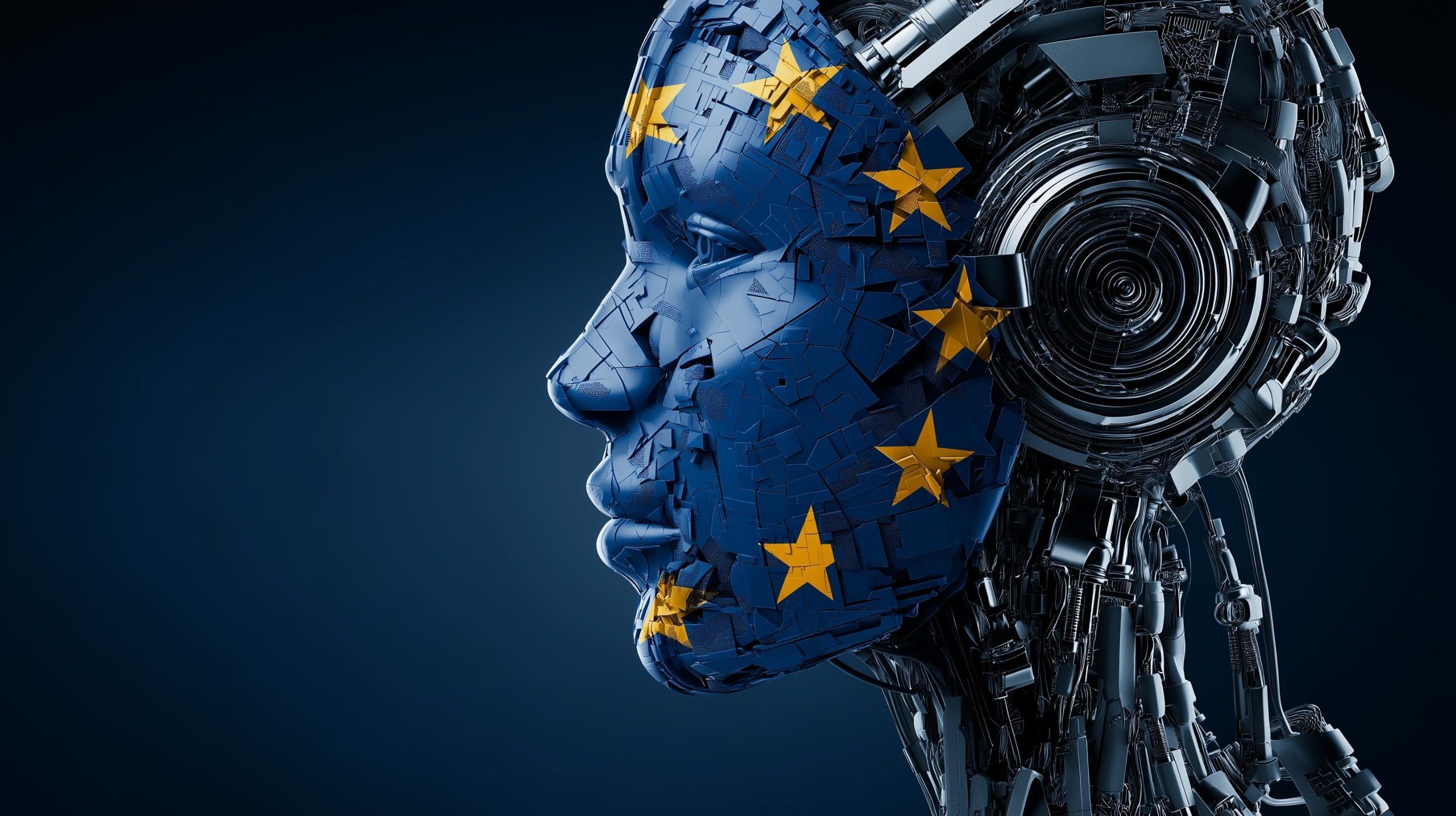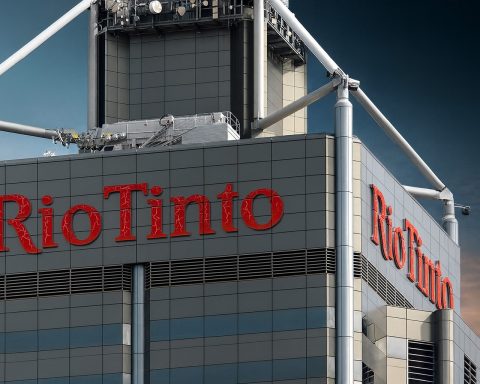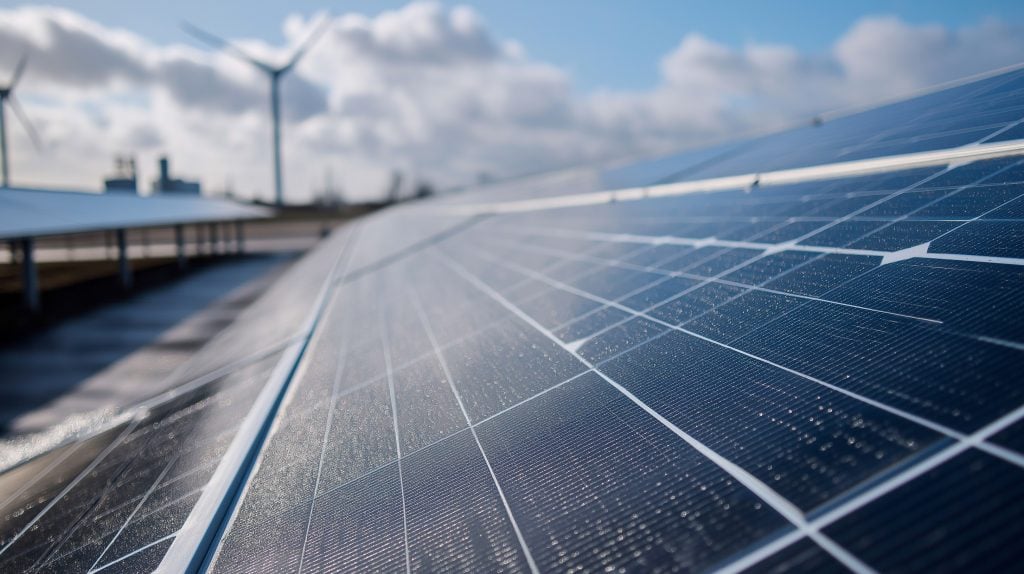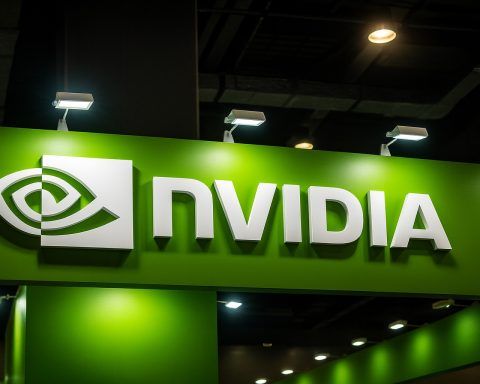- The EU’s AI Act, agreed in late 2023, is being rolled out in phases with August 2, 2025 as the deadline for major obligations on providers of advanced general-purpose AI models.
- Swedish Prime Minister Ulf Kristersson urged the EU to pause the AI Act’s implementation at the European Council meeting in late June 2025.
- European Commission Vice-President for digital policy Henna Virkkunen indicated flexibility, saying a targeted delay could be considered if standards and guidelines are not ready in time.
- Reuters reports that over two-thirds of European businesses struggle to understand their AI Act responsibilities.
- The European Commission aims to publish a voluntary Code of Practice for general AI models before August 2025 to guide compliance.
- In late June 2025, the EU signaled that nothing is off the table in talks with the United States over tech rules amid tariff threats.
- On June 30, 2025, the EU’s high-level AI Board reviewed plans for the Apply AI Strategy and AI ‘Factories’ and ‘Gigafactories’, with Yoshua Bengio briefing officials on finalizing the code of practice for general-purpose AI.
- The EU’s €20 billion AI Continent plan aims to create 3–5 AI gigafactories each with over 100,000 AI processors.
- Spain’s Catalonia region will host one of Europe’s first four AI gigafactories, the Móra la Nova site, with an estimated €5 billion price tag and a consortium including Telefónica, ACS, NVIDIA, Submer, and Multiverse.
- France’s Paris AI Campus, announced in May 2025, is a joint venture among Bpifrance, UAE’s G42/MGX, Mistral AI, and NVIDIA, aiming for 1.4 GW of computing capacity and opening in 2028 after construction starting in 2026.
Introduction
Artificial Intelligence (AI) in the European Union is at a pivotal moment, with new regulations poised to take effect, major investments underway, and debate intensifying around how to balance innovation with oversight. This report provides a comprehensive update on mid-2025 AI developments in the EU, covering the latest news from June 2025, expert opinions, legislative moves, forecasts, and industry initiatives. Key themes include the implementation (and possible adjustment) of the EU’s landmark AI Act, sizable funding for AI infrastructure to bolster Europe’s competitiveness, increasing AI adoption across sectors, and a flurry of corporate partnerships and product launches. All information is drawn from recent reputable sources and official statements, with publication dates and citations provided for reference.
Policy and Regulatory Updates in June 2025
EU AI Act – Implementation and Calls for a Pause: The EU’s Artificial Intelligence Act – a world-first comprehensive AI law agreed in late 2023 – is in a phased roll-out, with the next major provisions due to apply on August 2, 2025 [1] [2]. However, as that deadline nears, policymakers and industry voices are voicing concern that critical guidance and standards are still missing. In June 2025, Swedish Prime Minister Ulf Kristersson publicly urged the EU to “pause” the AI Act’s implementation, calling the rules “confusing” in the absence of common technical standards [3] [4]. Kristersson warned continuing the roll-out without clarity could cause Europe to fall behind technologically and even see certain AI applications withheld from the European market [5] [6]. He raised these concerns at the late-June European Council meeting of EU leaders, marking the first time a head of government has weighed in to request an AI Act delay [7].
Commission Hints at Flexibility: EU officials are acknowledging the implementation challenges. Henna Virkkunen, the European Commission’s Executive Vice-President in charge of digital policy (often dubbed the EU’s “tech chief”), indicated that “if standards and guidelines are not ready in time, we should not rule out postponing some parts of the AI Act.” [8] [9] Speaking to EU digital ministers in Luxembourg in early June, Virkkunen opened the door to a targeted delay to ensure an “innovation friendly” approach, even as she emphasized she wants to carry out the law’s mandate [10]. The Act formally entered into force in June 2024, and while its first restrictions took effect in February 2025, the upcoming August 2025 obligations (especially for providers of advanced general-purpose AI models) lack accompanying technical standards or a final code of practice, creating uncertainty for companies [11] [12]. “With critical parts of the AI Act still missing just weeks before rules kick in, we need a pause to get the Act right, or risk stalling innovation altogether,” warned Daniel Friedlaender, senior vice president of tech industry lobby CCIA Europe [13]. Notably, a recent survey found over two-thirds of European businesses struggle to understand their responsibilities under the AI Act [14], underscoring the law’s complexity. The European Commission aims to publish a voluntary Code of Practice for general AI models “before August” to guide compliance [15] [16], but until that arrives, even Brussels’ typically summer-bound lobbyists are calling for deadline extensions to avoid a scramble over the holidays [17] [18].
Debate Over Adjusting the Rulebook: Amid these concerns, debate has erupted over whether the EU should amend or “simplify” its new AI rules. Margrethe Vestager, the former EU Commissioner who spearheaded the AI Act’s drafting, spoke out in mid-June to urge that it’s “way too soon” to rewrite the AI Act [19] [20]. Vestager argued the rules were designed to “create trust” in AI – essential for uptake – and noted they deliberately do not apply to research or most “mundane” AI uses, countering arguments that regulation will stifle innovation [21] [22]. While the European Commission has launched a broader initiative to cut red tape and possibly tweak recent digital laws, Vestager insists the AI Act (only enacted last year) should be left intact for now [23] [24]. On the other side, industry groups are lobbying for a “stop-the-clock” mechanism to automatically delay enforcement if the needed standards and guidance aren’t ready [25] [26]. Some EU ministers have shown openness to a short delay – Poland’s digital minister called the idea “reasonable” so long as extra time is used productively [27] [28] – but cautioned against postponing for a year “and do nothing in the meantime.” [29] [30]
Transatlantic Tensions: Geopolitics are further complicating Europe’s AI regulatory stance. The EU is under pressure from the U.S. government – now led by President Donald Trump – which has taken issue with stringent European tech regulations. Facing threats of steep tariffs on EU goods unless compromises are found, the European Commission signaled in late June that “nothing is off the table” in talks with Washington, a notable shift from its earlier refusal to negotiate its digital rules [31] [32]. This raised alarm among some EU lawmakers; French MEP Stéphanie Yon-Courtin blasted any leeway on EU tech laws as an “unacceptable capitulation” to U.S. pressure [33] [34]. While this dispute encompasses multiple regulations (data, competition, etc.), the AI Act’s robust provisions are part of the transatlantic tug-of-war over tech governance. European officials insist they remain committed to the AI Act’s risk-based approach, even as they explore trimming administrative burdens for businesses [35] [36]. “We are currently implementing the AI Act,” Virkkunen told EU lawmakers, adding she wants enforcement in a way that does not hinder innovation [37]. In short, EU leaders are walking a fine line – determined to lead on trustworthy AI, but considering tactical delays or minor tweaks under both internal and external pressures.
Other Policy Moves: Beyond the headline-grabbing AI Act, the EU is advancing supportive AI policies and addressing ethical issues. At the end of June, the EU’s high-level AI Board (comprised of member state representatives) convened under the Polish EU Council Presidency to coordinate next steps in AI strategy [38] [39]. On June 30, the Board reviewed plans for an upcoming “Apply AI Strategy” (to be published in September 2025) and discussed progress on AI “Factories” and “Gigafactories” – large-scale computing centers planned across Europe [40] [41]. The Board also focused on AI Act implementation readiness: renowned AI expert Yoshua Bengio briefed officials on finalizing the code of practice for general-purpose AI (as Chair of an EU technical working group), and updates were given on European standardization efforts to support the Act [42]. Meanwhile, the Council of the EU (member states’ ministers) adopted conclusions on gender equality in the AI era, calling for measures to prevent AI-driven discrimination. The Council urged steps to tackle gender bias in AI systems – for instance, using high-quality representative data and human oversight to avoid biased outcomes – while also encouraging AI’s positive uses for reducing human bias [43] [44]. These initiatives show the EU addressing AI’s societal impacts alongside its economic and security ambitions.
Major Investments and AI Infrastructure Initiatives
A defining feature of Europe’s AI strategy in 2025 is massive investment in AI infrastructure to bolster technological sovereignty and close the gap with the US and China. In April 2025, the European Commission unveiled an “AI Continent” plan to inject €20 billion into building cutting-edge AI development facilities across the EU [45] [46]. The flagship proposal involves creating 3–5 AI “gigafactories” – essentially supercomputing datacenters with over 100,000 AI processors each – to enable “moonshot” AI projects in fields like healthcare, robotics, and climate science [47] [48]. These AI gigafactories would dwarf the EU’s existing network of 13 smaller AI research “factories,” some of which top out at ~25,000 processors [49]. By comparison, the EU’s plan envisions facilities many times more powerful, helping European researchers and companies train next-generation AI models at scale. EU officials see this as critical to compete globally: a recent Stanford study noted that in 2024, the U.S. produced 40 notable AI models and China 15, whereas Europe produced only 3 (all from France) [50]. Europe also lagged on AI investment and patents, with no EU country in the global top five for AI “vibrancy” (the UK ranked third, but France was sixth and Germany eighth) [51]. The new EU AI fund (≈€20bn) aims to reverse this by leveraging public money via the European Investment Bank to crowd-in private investors [52]. Part of the vision is also to foster European-made AI chips, reducing reliance on foreign semiconductor supply for AI [53].
Gigafactory Race – Spain’s €5 Billion Project: By June 2025, concrete steps toward the gigafactories were underway. In Spain, the government announced that southern Catalonia will host one of Europe’s first four AI gigafactories [54]. The proposed site in Móra la Nova comes with an estimated €5 billion price tag (public and private investment) [55]. It would be Spain’s sole gigafactory and join 3–4 others planned across the EU under the €20bn European fund for AI computing [56]. European Commission President Ursula von der Leyen first announced this initiative in February 2025 as a move toward “technological sovereignty” in AI [57]. The Catalonia project is backed by a consortium led by Spanish telecom Telefónica, with major industry players (construction firm ACS, Orange’s Spanish unit, NVIDIA, immersion cooling startup Submer, and fintech firm Multiverse) on board [58]. Spain’s digital ministry and innovation agencies are also involved, and officials hinted at recruiting a large international investor to strengthen the bid [59]. If confirmed, the Catalonia AI campus – alongside sister sites in other countries – will position Europe to host its own large-scale model training and reduce dependence on foreign cloud providers. Spanish authorities said the project would put Spain “at the forefront” of developing sovereign, sustainable, high-performance AI capabilities [60]. This mirrors the EU’s wider goal: ensuring Europe can develop and deploy advanced AI on its own terms and infrastructure.
France’s “AI Campus” and International Partnerships: France is emerging as another hub of AI infrastructure, blending European and international investment. In May 2025, a joint venture was launched to build Europe’s largest AI R&D campus near Paris, a project presented at the “Choose France” summit in Versailles. The partnership includes France’s state investment bank Bpifrance, UAE-based AI fund G42/MGX, French AI startup Mistral AI, and U.S. tech giant NVIDIA, with support from President Emmanuel Macron and UAE’s leadership [61] [62]. The campus is planned to ultimately reach 1.4 GW of computing capacity – a transformational level – and serve as Europe’s first purpose-built hub covering the full AI lifecycle from research to deployment [63] [64]. Slated to begin construction in 2026 and open by 2028, the Paris AI Campus is pitched as a “sovereign, sustainable, and globally competitive” infrastructure, integrating green energy and advanced hardware to ensure Europe’s digital and climate goals align [65] [66]. French officials hail it as proof of France’s scientific excellence and a boost to European technological sovereignty [67]. Arthur Mensch, CEO of Mistral AI, noted the initiative unites “top-tier expertise and cutting-edge solutions” to foster an ecosystem benefiting companies, public institutions, and academia – ultimately aiming to accelerate innovation and Europe’s leadership in AI [68]. NVIDIA’s CEO Jensen Huang added that the campus “will revolutionise science, education, and industry” in France, equipping the nation for the age of AI [69]. This project exemplifies how Europe is leveraging both domestic and foreign allies to jump-start its AI capabilities: by marrying local talent and public support with global tech and capital, the EU can build the kind of mega-scale compute previously seen only in the U.S. or China.
NVIDIA’s Broad Europe Expansion: Indeed, NVIDIA – the U.S. company behind the majority of advanced AI chips – has become a key partner in Europe’s AI push. In mid-June, NVIDIA announced a major expansion of AI technology centers and partnerships across Europe [70] [71]. New or expanded AI centers are planned in Germany, Sweden, Italy, Spain, Finland, and the UK, building on collaborations with universities and the company’s existing Deep Learning Institute training programs [72] [73]. These centers will focus on local priorities: for example, the Bavarian AI Center in Germany (with the Bayern KI consortium) will advance research in digital medicine, diffusion models, and robotics [74]. The Sweden AI Center will support research and skills development with NVIDIA experts on-site [75]. Italy’s center will tie into new AI factory deployments with the CINECA supercomputing consortium [76], and Spain’s center will collaborate with the Barcelona Supercomputing Centre on an AI factory [77]. The UK’s AI Center (though outside the EU) is also noted, focusing on areas like embodied AI and climate modeling [78]. Alongside centers, NVIDIA is teaming up with European telecom companies to deploy “sovereign AI” cloud infrastructure. Telecom giants Orange, Fastweb, Swisscom, Telefónica, and Telenor are working with NVIDIA to integrate powerful AI compute into their data centers and networks [79] [80]. For instance, Fastweb (Italy) has introduced MIIA, a new Italian-language large language model, trained and running on its NVIDIA-powered supercomputer [81]. Telenor (Norway) is building a renewable-powered data center for AI and hosting a multilingual translation service with over 100 languages [82]. Telefónica (Spain) is piloting a distributed edge-AI “fabric” with hundreds of NVIDIA GPUs to offer low-latency, privacy-focused AI services across Spain [83]. These investments mean that European industry will have local, high-performance AI cloud options, reducing latency and addressing data sovereignty by keeping AI development within Europe’s jurisdiction. NVIDIA’s CEO Jensen Huang framed this effort in grand terms: “Every industrial revolution begins with infrastructure. AI is the essential infrastructure of our time, just as electricity and the internet once were.” [84] With “bold leadership from Europe’s governments and industries,” he said, “AI will drive transformative innovation and prosperity for generations to come.” [85] European leaders echo this optimism: French President Macron stated that by partnering with NVIDIA, France is “equipping researchers, entrepreneurs and public institutions with the tools they need… to shape the future of AI for France.” [86] Such public-private alignment indicates a strong momentum behind Europe’s AI development, even as regulatory debates continue.
Notably, as Europe invests in AI capacity, it is also mindful of energy and environmental impacts. The Guardian reported concerns that these “power-hungry” AI datacenters could strain Europe’s electricity grids and climate goals if not managed sustainably [87] [88]. EU officials have said the new facilities should run on as much green energy as possible and even recycle cooling water to minimize environmental impact [89]. Greenpeace activists have warned that ballooning data center demand might undermine renewable energy gains, citing Ireland where data centers now consume over a fifth of the electricity [90]. Any “AI boom” in Europe will thus require parallel investments in clean energy to ensure that scaling up AI doesn’t clash with the EU’s climate commitments. This has not slowed the ambition – but it adds another layer to Europe’s holistic approach to AI: building not just more computing power, but responsible and resilient infrastructure.
AI Adoption, Trends, and Forecasts Across Sectors
Even as Europe lays the groundwork for future AI capacity, adoption of AI in businesses and public services is accelerating. Recent analyses indicate that 2025 will be a breakout year for AI uptake in Europe, though current usage is uneven across company size and country. According to Eurostat data, by 2024 only about 13.5% of European firms had adopted some form of AI, but with higher rates in tech-forward nations like Denmark (27.6% of firms), Sweden (25.1%), and Belgium (24.7%) [91]. This suggests a strong northern Europe uptake, while many SMEs across the continent lag behind. Indeed, an ECB survey noted that fewer than 12% of EU small businesses use at least one AI technology, compared to over 40% of large companies [92]. However, the outlook for 2025 is dramatically higher: Finch Capital predicts over two-thirds of European businesses will integrate AI software by the end of 2025 [93]. Such a surge would mean a majority of firms large and small embracing AI solutions within the next year, a trend driven largely by the explosion of user-friendly AI (like generative AI tools) and competitive pressures to automate. Analysts see AI becoming ubiquitous in enterprise SaaS (Software-as-a-Service) offerings, especially in functions like finance, HR, and tax where AI adoption rates could reach 85% [94]. In other words, many routine business processes across Europe are on the cusp of being augmented or run by AI – from invoice processing bots to AI assistants for customer service.
Sector Spotlights – Education and Healthcare: Two sectors illustrating both the promise and challenges of AI adoption are education and healthcare. In June 2025, British education company Pearson announced a multi-year partnership with Google Cloud to bring AI into schools’ classrooms [95] [96]. The initiative will use Google’s advanced AI models to create personalized learning tools for primary and secondary students, adapting to each child’s pace and needs [97]. The AI will help teachers by tracking student performance in real-time and generating tailored lesson plans [98]. Pearson’s CEO Omar Abbosh said AI can “reshape school education” by moving away from one-size-fits-all teaching to individualized learning paths for each student [99]. Notably, Pearson isn’t betting on just one tech giant – it has also signed AI partnerships with Microsoft and Amazon Web Services [100] – indicating a broad effort to infuse AI across educational content and platforms. This reflects a wider European interest in edtech: using AI tutors, grading assistants, and content recommendation engines to address teacher shortages and improve outcomes. Still, it raises policy questions about data privacy for minors and the need for teacher training so that human educators can effectively integrate AI tools in classrooms. The EU generally supports AI in education (as seen in programs like Digital Education Action Plan), but will likely develop guidelines to ensure such deployments are ethical and inclusive.
In healthcare, Europe sees enormous potential for AI to relieve overstretched systems – but also acknowledges significant hurdles. EU Health Commissioner Stella Kyriakides and others have noted AI’s ability to help diagnose diseases, manage chronic conditions, and personalize treatment. In a May 2025 forum reported by POLITICO, officials highlighted that AI “has the potential to transform the health care sector” amid staff shortages and rising demand [101]. Fulvia Raffaelli, head of digital health at the European Commission’s Health Directorate, said the Commission is studying AI’s challenges in healthcare and mapping “accelerators” to adoption [102] [103]. Key obstacles cited by industry experts include data access and interoperability – Europe’s health data is fragmented across many systems – as well as the difficulty of integrating AI into clinicians’ workflows and navigating a “jungle” of regulations [104]. Additionally, trust is a major issue: both citizens and health workers are often suspicious of AI making medical decisions [105]. To build confidence, Raffaelli stressed a “joint effort” is needed – combining regulation, industry best practices, and education of practitioners and patients [106]. The forthcoming European Health Data Space (EHDS) is one initiative aimed at improving data sharing for health AI, and the Commission sees it as a vital piece to enable trustworthy AI in healthcare [107]. In summary, while European hospitals and startups are piloting AI for tasks like medical imaging analysis, triage chatbots, and drug discovery, widespread adoption will require clearer rules (under the AI Act’s high-risk system provisions for health) and efforts to overcome skepticism. Europe’s cautious approach – emphasizing “trustworthy AI” – is on full display in this sector, given the high stakes for safety and ethics when AI is used on patients.
Public Sector and Ethical Concerns: The spread of AI in Europe also extends to government use, which has not been without controversy. A flashpoint in late June was the use of AI-powered facial recognition by Hungarian authorities at the Budapest Pride parade, ostensibly for security. This prompted an outcry from human rights advocates and some EU officials, who pressed Brussels to act against what they view as invasive surveillance [108]. The European Commission remained silent on the issue initially [109], but the incident put pressure on the EU to enforce its stance on biometric identification systems. Under the AI Act, “real-time” remote biometric identification in public spaces is generally classified as high-risk or even banned in many cases, due to civil liberties concerns. The Budapest case underscores the tension between national authorities experimenting with AI for law enforcement and EU principles on privacy and fundamental rights. It is a reminder that AI adoption is not automatically positive – it can also “perpetuate bias or enable authoritarian practices if unchecked,” as rights groups warn. In response, the European Parliament and civil society continue to push for strict guardrails (or outright prohibitions) on AI uses like mass surveillance or social scoring. This ongoing debate will shape how AI is used by police, border agents, and other public bodies across Europe.
On the flip side, AI is also being eyed for positive public sector applications, such as improving government services and efficiency. For example, EU countries are exploring AI assistants to help citizens navigate administrative procedures or AI systems to detect fraud in spending programs. The European Council has even highlighted the need for AI skills in the public workforce, recognizing that civil servants will need training to leverage AI tools effectively [110]. Moreover, in research and academia, European scientists are increasingly using AI to accelerate discoveries. A Nature survey noted by POLITICO found a majority of researchers are open to using generative AI for tasks like editing or translating manuscripts (about 70% found it acceptable) [111], though many disapprove of AI being used in peer review or without disclosure [112] [113]. This reflects a broader trend: AI is permeating professional life, but with ongoing debate about appropriate use and transparency.
Market Trends and the Road Ahead: Market analysts remain optimistic that Europe’s renewed focus on AI will pay off in competitiveness. The continent’s historically slower AI uptake (relative to the US) may be about to turn a corner. The European Central Bank observed that firms adopting AI tend to see productivity gains – but only a minority of especially large firms have done so to date [114]. As more mid-sized and small companies adopt AI, Europe could unlock significant productivity growth (a timely boost as it seeks to reinvigorate a slowing economy). Consulting firms like PwC and Morgan Stanley have highlighted trends such as industry-specific AI solutions, custom AI chips, and AI systems for climate tech as areas where Europe could innovate and even lead in coming years [115] [116]. There’s also an expectation that AI will be a major investment theme: venture capital funding for European AI startups has risen sharply, especially in fields like generative AI after the global buzz of ChatGPT. For instance, French startup Mistral AI raised €105 million in 2023 as a new entrant in large language models, and by 2025 it’s deeply involved in building European cloud infrastructure (as noted earlier). Germany’s Aleph Alpha and the UK’s Stability AI (though UK is outside EU now) are other notable players developing Europe-based AI models. This growing startup ecosystem is being nurtured by initiatives like the EU’s Horizon Europe research program and national AI funds (e.g. Germany’s dedicated AI investment, France’s “AI for Humanity” strategy funding, etc.).
Experts forecast that AI adoption in Europe will not be uniform – sectors like finance, telecom, and manufacturing (Industry 4.0) are moving fastest, while others like agriculture or some public services may take longer. Yet even traditional fields are seeing innovation: European farmers are testing AI for crop monitoring, and courts are debating AI tools in legal proceedings (a UK judge recently warned about lawyers using AI tools that “hallucinate” false citations [117]). By the end of this decade, AI is expected to contribute hundreds of billions of euros to Europe’s GDP, provided the EU can cultivate the right skills and data environment. The twin transition that Europe often speaks of – digital and green – also places AI at the center of climate solutions. Notably, a study suggested AI could help cut more emissions than it produces globally if properly harnessed (e.g. optimizing energy systems can save more CO2 than data centers emit) [118]. The EU is exploring AI in energy management, smart grids, and climate modeling as part of this vision.
In summary, forecasts for Europe’s AI sector are cautiously optimistic: strong growth in adoption is expected, and the flurry of 2025 investments aims to ensure Europe has the infrastructure and regulatory clarity to support that growth. However, success will depend on bridging the gap between ambition and execution – getting standards and governance in place, convincing businesses (especially SMEs) to implement AI, and retaining top AI talent in Europe’s ecosystem. The remainder of 2025 will be crucial as the AI Act’s first major compliance deadline hits in August and as the EU refines its strategies ahead of the 2025-26 political transition (European Parliament elections and a new Commission in 2024-25).
Business and Innovation Highlights
The past weeks have also seen significant corporate and research developments in Europe’s AI landscape, from partnerships and acquisitions to new research hubs and talent moves. Here are some of the major business and innovation highlights:
- Big Tech & European Education: As mentioned, Pearson (Europe’s largest education publisher) and Google struck a deal to integrate AI into schooling, illustrating how global tech firms are partnering with European industry [119] [120]. Similarly, Microsoft and Amazon are partnering with Pearson on AI – a sign that Europe’s demand for AI solutions is attracting multiple providers and fostering a competitive market for AI-as-a-service in education [121]. These partnerships often involve setting up joint labs or training programs in Europe; for example, Google and others have AI research centers in Paris, Berlin, and other EU cities that collaborate with local academia.
- AI Talent and Hiring Wars: A competitive global AI talent market is playing out in Europe as well. In late June, it was reported that Meta (Facebook’s parent) hired several AI researchers from OpenAI’s office in Zurich, poaching talent to bolster Meta’s AI labs [122] [123]. Earlier in the week, Meta had already recruited a trio of OpenAI scientists in Europe [124]. This indicates a “brain drain” concern but also the vibrancy of Europe’s AI research scene – top researchers are working in European research hubs (Zurich, which, while in Switzerland, is part of the broader European tech ecosystem). Meta’s aggressive hiring (part of CEO Mark Zuckerberg’s push on “superintelligence” projects [125]) suggests that U.S. tech giants will continue expanding AI R&D in Europe, whether through hiring or setting up new AI centers, to tap into the continent’s talent pool. At the same time, European startups like Mistral AI have been able to attract global talent to Europe, aided by substantial funding and the promise of working on cutting-edge open-source models. The EU is also funding training networks and fellowships to grow more homegrown AI experts, but the competition with deep-pocketed foreign firms remains a challenge.
- European Startups and Products: Europe’s AI startup ecosystem is producing new products and services at a rapid clip. In mid-June at the VivaTech conference in Paris, Mistral AI announced “Mistral Compute”, an NVIDIA-backed cloud platform to provide AI computing power as an alternative to the U.S. hyperscalers [126]. Mistral’s platform will be powered by 18,000 NVIDIA GPUs in its first phase and expand to multiple sites by 2026 [127], offering European users a cloud optimized for open-source AI models and compliant with EU norms. President Macron hailed the Mistral-NVIDIA tie-up as a “historic partnership” for European AI sovereignty [128]. Another example is Aleph Alpha in Germany, which has developed a multilingual large language model and is working closely with German government and enterprise clients on sovereign AI solutions – it recently received German state funding and partnerships with Bosch and SAP (announcements from early 2025). In the defense sector, Munich-based Helsing is integrating AI in military systems and secured large investments (including from the Norwegian sovereign fund and venture firms), highlighting how European startups are also focusing on sensitive applications with European control.
- New R&D Hubs: Beyond NVIDIA’s centers, European corporates are also establishing their own AI R&D facilities. For instance, Bosch opened an AI campus in Tübingen, Germany (as part of the Cyber Valley initiative) to research AI for engineering and automotive uses. Siemens has an AI lab focusing on industrial AI in Munich. Automaker Volkswagen in June 2025 announced an expansion of its AI research collaboration with Horizon Robotics in Germany to advance autonomous driving algorithms. In the Nordics, Finland’s government is funding a new AI research program focusing on AI in forestry and sustainability (a niche aligning with Finland’s economic strengths). Each of these initiatives speaks to a trend: European industry leaders are heavily investing in applied AI research on European soil, often in collaboration with universities and backed by public grants.
- AI and Climate Tech: June also saw intersections of AI with Europe’s green agenda. The G7 summit (held in Japan but with EU leaders participating) skirted detailed AI safety commitments but did acknowledge the energy cost of AI, pledging to work on efficiency [129]. Meanwhile, the EU is funding projects that use AI for climate modeling – e.g. an EU-backed consortium is using AI to improve weather extremes prediction as part of the Destination Earth initiative. On the corporate side, BP and Schneider Electric launched a pilot in June to use AI for optimizing renewable energy grids in Europe, and Iberdrola (Spain) is using AI to monitor its wind farms for predictive maintenance. These are practical deployments showing AI’s role in achieving Europe’s climate targets.
- Legislative Implementation and Funding Programs: Finally, it’s worth noting how national AI strategies and EU funding programs are feeding into these developments. Most EU countries have updated AI strategies that complement the EU’s effort – for instance, Germany’s AI Strategy 2025 which includes establishing 12 AI research centers nationwide and targeted funding for SME adoption. France’s national AI plan (part of the France 2030 investment program) dedicates billions to AI research in health and the environment, which helped incubate startups like Mistral. At the EU level, the Horizon Europe program (2021–2027) has allocated around €1 billion specifically for AI research and innovation, and the Digital Europe Programme is investing €580 million in setting up Testing and Experimentation Facilities (TEFs) for AI in areas like agrifood, healthcare, manufacturing, and smart cities. In June 2025, some of these TEFs became operational – for example, an AI testing facility for medical devices opened in Spain with EU support, allowing startups to validate AI-driven diagnostic tools under real hospital conditions. The EU’s Innovation Fund is also channeling money into AI, such as funding AI-powered energy efficiency projects. Additionally, the European Innovation Council (EIC), an EU body that acts like a VC, has been backing AI startups – by mid-2025, the EIC Fund had made equity investments in dozens of AI companies tackling everything from AI-driven drug discovery to AI for robotics, reflecting a broad approach to nurturing innovation.
Conclusion
In just a few weeks, Europe’s AI landscape has seen a whirlwind of activity – a microcosm of the broader transformations underway. On the policy front, the EU is fine-tuning how to govern AI, balancing “guardrails” with “growth.” June 2025’s debates around the AI Act underscore the EU’s determination to set global standards for trustworthy AI, even as it pragmatically considers adjusting timelines in the face of real-world constraints. High-profile voices from prime ministers to former commissioners have weighed in, reflecting a healthy democratic discourse on AI’s future in Europe [130] [131]. The outcome – whether a temporary pause or a reaffirmed schedule – will influence how quickly companies big and small embrace AI solutions under the new rules.
At the same time, Europe is putting its money where its mouth is. Billions of euros are being poured into the AI ecosystem: building the “gigafactories” that will give European innovators the raw computing power needed to compete [132] [133], and creating environments (from cloud platforms to campuses) that aim to keep AI talent and industry within Europe’s sphere. These investments are bolstered by transnational cooperation – the France/UAE partnership and NVIDIA’s Europe-wide projects show that Europe is open to global collaboration, on Europe’s terms, to accelerate AI development [134] [135]. The hoped-for result is a Europe that can develop leading AI models for its languages and needs, secure its supply chains (including future AI chips), and ensure that AI’s benefits are broadly shared across its member states.
For European businesses and citizens, the AI revolution is becoming tangible. More schools will experiment with AI tutors; more factories will use AI for predictive maintenance; hospitals will increasingly trial AI diagnostic aids; and government services might get a bit smarter and faster thanks to AI chat assistants. By the end of 2025, if forecasts hold, the majority of European companies will be using AI in some form [136] – a remarkable diffusion for a technology that, just a few years ago, was confined to tech giants and labs. This rapid adoption is both an opportunity and a test: Europe’s focus on ethical, human-centric AI will be scrutinized as theory meets practice. Will European AI deployments respect privacy, avoid bias, and complement workers rather than replace them? Policymakers are betting that with the right framework (the AI Act, digital rights laws, etc.), Europe can harness AI’s upsides while limiting abuses. The next year or two – as regulations kick in and high-profile use cases emerge – will be critical in proving that model.
Finally, Europe’s approach to AI is also about asserting its values and strategic autonomy in a changing world. As one French MEP put it amid transatlantic pressures, the EU does not want to “cave” on its tech rules [137] [138]; it wants to demonstrate that innovation and regulation are not mutually exclusive but mutually reinforcing – that by creating a trusted environment for AI, public acceptance will grow and innovation will flourish responsibly. If Europe can pull this off, it could provide a blueprint for democratic governance of AI globally. If it stumbles (whether via overregulation or under-enforcement), it will serve as a cautionary tale. As of June 2025, the EU is moving full-steam ahead – with eyes wide open – into an AI-powered future, determined to shape it in line with European ideals of trust, inclusivity, and human dignity.
Sources: Recent news and reports (June 2025) have informed this analysis, including Reuters [139] [140], Politico [141] [142], The Guardian [143] [144], official EU press releases [145], and regional media [146] [147], among others. All developments are cited in context above. This comprehensive overview captures the state of AI in the European Union as of late June 2025 – a time of both intense challenges and bold initiatives shaping Europe’s digital future.
References
1. www.politico.eu, 2. www.politico.eu, 3. www.politico.eu, 4. www.politico.eu, 5. www.politico.eu, 6. www.politico.eu, 7. www.politico.eu, 8. www.politico.eu, 9. www.politico.eu, 10. www.reuters.com, 11. www.politico.eu, 12. www.politico.eu, 13. www.reuters.com, 14. www.reuters.com, 15. www.politico.eu, 16. www.politico.eu, 17. www.politico.eu, 18. www.politico.eu, 19. www.politico.eu, 20. www.politico.eu, 21. www.politico.eu, 22. www.politico.eu, 23. www.politico.eu, 24. www.politico.eu, 25. www.politico.eu, 26. www.politico.eu, 27. www.politico.eu, 28. www.politico.eu, 29. www.politico.eu, 30. www.politico.eu, 31. www.politico.eu, 32. www.politico.eu, 33. www.politico.eu, 34. www.politico.eu, 35. www.theguardian.com, 36. www.theguardian.com, 37. www.reuters.com, 38. digital-strategy.ec.europa.eu, 39. digital-strategy.ec.europa.eu, 40. digital-strategy.ec.europa.eu, 41. digital-strategy.ec.europa.eu, 42. digital-strategy.ec.europa.eu, 43. www.consilium.europa.eu, 44. www.consilium.europa.eu, 45. www.theguardian.com, 46. www.theguardian.com, 47. www.theguardian.com, 48. www.theguardian.com, 49. www.theguardian.com, 50. www.theguardian.com, 51. www.theguardian.com, 52. www.theguardian.com, 53. www.theguardian.com, 54. www.catalannews.com, 55. www.catalannews.com, 56. www.catalannews.com, 57. www.catalannews.com, 58. www.catalannews.com, 59. www.catalannews.com, 60. www.catalannews.com, 61. www.wam.ae, 62. www.wam.ae, 63. www.wam.ae, 64. www.wam.ae, 65. www.wam.ae, 66. www.wam.ae, 67. www.wam.ae, 68. www.wam.ae, 69. www.wam.ae, 70. news.satnews.com, 71. news.satnews.com, 72. news.satnews.com, 73. news.satnews.com, 74. news.satnews.com, 75. news.satnews.com, 76. news.satnews.com, 77. news.satnews.com, 78. news.satnews.com, 79. news.satnews.com, 80. news.satnews.com, 81. news.satnews.com, 82. news.satnews.com, 83. news.satnews.com, 84. news.satnews.com, 85. news.satnews.com, 86. news.satnews.com, 87. www.theguardian.com, 88. www.theguardian.com, 89. www.theguardian.com, 90. www.theguardian.com, 91. www.baltictimes.com, 92. www.ecb.europa.eu, 93. www.baltictimes.com, 94. www.baltictimes.com, 95. www.reuters.com, 96. www.reuters.com, 97. www.reuters.com, 98. www.reuters.com, 99. www.reuters.com, 100. www.reuters.com, 101. www.politico.com, 102. www.politico.com, 103. www.politico.com, 104. www.politico.com, 105. www.politico.com, 106. www.politico.com, 107. www.politico.com, 108. www.politico.eu, 109. www.politico.eu, 110. epthinktank.eu, 111. www.politico.com, 112. www.politico.com, 113. www.politico.com, 114. www.ecb.europa.eu, 115. www.politico.com, 116. www.morganstanley.com, 117. www.politico.eu, 118. subscriber.politicopro.com, 119. www.reuters.com, 120. www.reuters.com, 121. www.reuters.com, 122. www.reuters.com, 123. www.reuters.com, 124. www.reuters.com, 125. www.reuters.com, 126. sifted.eu, 127. news.satnews.com, 128. www.pymnts.com, 129. www.politico.eu, 130. www.politico.eu, 131. www.politico.eu, 132. www.catalannews.com, 133. www.theguardian.com, 134. www.wam.ae, 135. news.satnews.com, 136. www.baltictimes.com, 137. www.politico.eu, 138. www.politico.eu, 139. www.reuters.com, 140. www.reuters.com, 141. www.politico.eu, 142. www.politico.eu, 143. www.theguardian.com, 144. www.theguardian.com, 145. www.consilium.europa.eu, 146. www.catalannews.com, 147. www.catalannews.com










